GLOBAL WARMING IN JAPAN
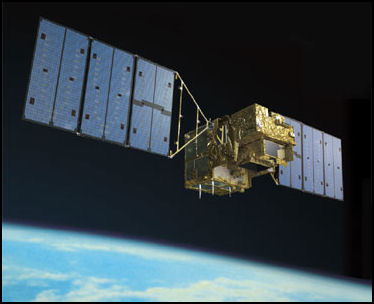
Japan's global warming
research satellite Temperatures in Japan have risen one degree nationwide in the past century and two to three degrees in the cities, where there has been a sharp increase in the number of days with temperatures exceeding 30 and 35 degrees.
Japan’s national average temperature has risen by between 0.2 to 1 degree C in the past decade It is estimated that by the year 2050, Tokyo could have more than 100 days a years with temperatures above 30 degrees C. In the early 2000s a big deal was made when temperatures in Tokyo exceeded 30 degrees C for 35 days in a row.
Scientists predict temperatures will rise 4.7 degrees by the ed of the 21st century, with temperatures being particularly high in the northern latitudes with the temperatures increasing by 5.8 degrees in Hokkaido.
Japan ranks forth in the world in carbon dioxide emissions. It produces 4.8 percent of world’s carbon dioxide (1.3 billion metric tons of carbon dioxide), compared to around 22 percent by the United States and 22 percent by China.
In the last decade carbon dioxide emissions have increased 10 percent. In 2006, emissions were 7.8 percent above the 1990 Kyoto protocol standard. The production of global warming gases in 2007 was high as a result of a nuclear plant closure and a heat wave.
Proportion of carbon dioxide emissions in Japan by sector: 1) industry (38 percent); 2) transportation (21 percent); 3) commercial (commerce, offices, stores, schools, hospitals, 20 percent); 4) households (14 percent ); and 5) energy (7 percent). While industry has been able to cut emissions by 5.5 percent in recent years emissions from the transportation sector has increased 18.1 percent, emissions from the commercial sector have increased 44.6 percent, emissions from households have increased 36.7 percent and emissions from the energy sector have increased 15.7 percent.
Japan’s power sector creates 400 million tons of carbon dioxide, compared to 2,790 million produced by the United States and 2,680 million produced by China The transportation sector generates 261.5 million tons of carbon dioxide. There is a movement to get more people to take trains because they produce less carbon dioxide than cars or planes.
According to survey conducted by the National Institute for Environmental Studies 95 percent of Japanese said they have noticed climate changes. Those who said they had noticed changes in temperatures were asked to give multiple serious scenarios that could result from global warming. According to the results, 46.4 percent of respondents, the largest number, said more extreme weather changes would occur, while 42.2 percent predicted sea levels would rise--results similar to those predictions by experts. However, 40.5 percent of responses predicted the gradual destruction of the ozone layer, which is caused mainly by chlorofluorocarbons, suggesting some people misunderstood the problem. [Source: Yomiuri Shimbun, March 29, 2007]
Japan produced 119,998 tons of ozone-depleting CFCs in 1986. Now it produces virtually none.
Websites and Resources
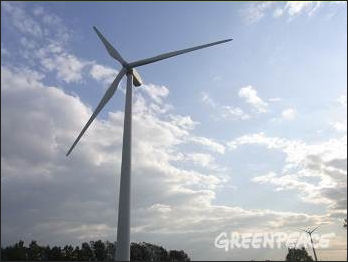
Links in this Website: GLOBAL WARMING, RAIN FORESTS AND JAPAN Factsanddetails.com/Japan ; ENVIRONMENTAL ISSUES AND POLLUTION IN JAPAN Factsanddetails.com/Japan ; RECYCLING AND ENVIRONMENTAL GROUPS IN JAPAN Factsanddetails.com/Japan ; OIL, COAL, NATURAL GAS AND ENERGY IN JAPAN Factsanddetails.com/Japan ; NUCLEAR ENERGY IN JAPAN Factsanddetails.com/Japan ; SOLAR, WIND AND ALTERNATIVE ENERGY IN JAPAN Factsanddetails.com/Japan ; NATURAL RESOURCES AND JAPAN Factsanddetails.com/Japan ; WATER IN JAPAN Factsanddetails.com/Japan
Good Websites and Sources on the Environment: Ministry of Environment env.go.jp/en ; National Institute for Environmental Studies nies.go.jp ; Quality of the Environment, a 2003 Report env.go.jp/policy/hakusyo ; Japan for Sustainability japanfs.org ; Japan Times Environment Page japantimes.co.jp ; Essay on Comparing Japan and Britain on Environmental Criteria aboutjapan.japansociety.org ; Wikipedia article on Environmental Issues in Japan Wikipedia ; NPR Story on Public Works and the Environment npr.org/templates/story ; Essay on Japan’s Forests and History aboutjapan.japansociety.org ; Statistics and Research Japan Environment Association jeas.or.jp ; Statistical Handbook of Japan Environment and Life Chapter stat.go.jp/english/data/handbook ; 2010 Edition stat.go.jp/english/data/nenkan ; News stat.go.jp Research Institute of Innovative Technology rite.or.jp ; Aozora.or Aozora.or ; Virtual Center for Environmental Technology Exchange apec-vc.or.jp ; Google E-Book: Japan in the 21st Century, Environment, Economy and Society (2005) books.google.com/books ;
Good Websites and Sources: Global Warming: Ministry of Environment env.go.jp/en ; Results of Global Warming in Japan epcc.pref.osaka.jp ; Japan and Global Warming Policies, Institute of Public Affairs ipa.org.au/publications ; ; Wikipedia article on Climate Change in Japan Wikipedia ; Rice Farming and Greenhouse Gases gsfc.nasa.gov ;Global Warming and Cherry Blossoms telegraph.co.uk ; Research Institute of Innovative Technology rite.or.jp
Forests and Rain Forests: Statistical Handbook of Japan Forestry Section stat.go.jp/english/data/handbook ; 2010 Edition stat.go.jp/english/data/nenkan ; News stat.go.jp Essay on Japan’s Forests and History aboutjapan.japansociety.org ; Japan’s Tropical Forest Action Network jca.apc.org/jatan Amazon Rainforest Foundation of Japan rainforestjp.com ; Japan and Borneo’s Rain Forests news.mongabay.com
Effects of Global Warming in Japan
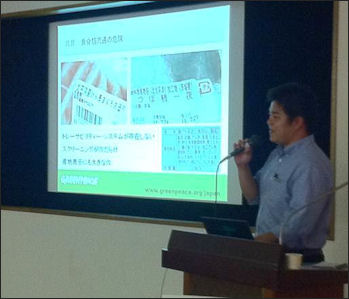
Greenpeace Meeting A report by Intergovernmental Panel on Climate Change (IPCC), a United Nations organization, on global warming said that in Japan: “Further increases in temperatures in urban areas due to absorption of increased solar radiation will have negative implications for energy and water consumption, communications, transportation, water run-off and water quality, human health and discomfort and local ecosystems.”
It is expected that Japan's hot summers will become even hotter. The number of days with temperatures of 30 degrees C or above may double in some places. In Hokkaido the number of days over 30 degrees is expected to triple to about 100 days by 2100. Typhoons are expected to increase in ferocity and rising sea levels could produce massive coastal erosion.
Japan is predicted to have higher rain fall from global warming as a result of an “increase in atmospheric moisture availability,” much of it from typhoons and storms that present a flooding threat. The affects of global warming are expected to be most profound in the southern past of Japan, particularly Kyushu, which are expected to be hurt by a double whammy of high temperatures for a longer periods of time and more frequent and powerful typhoons. Super typhoons as strong as Hurricane Katrina that devastated New Orleans are expected to hit Japan over the coming decades with global warming perhaps being one of the causes of their megastrength.
Tokyo, Osaka and other coastal cities are particularly vulnerable to sea level rises associated with global warming. If sea levels rise by 40 centimeters by the 21st century as they are expected to 2,339 square miles of land, occupied largely by large cities, would be affected. If sea levels rise one meter 90 percent of Japan’s beaches and many tidal mudflat, important feeding ground for birds and fish, will disappear The government is already preparing to spend huge amounts of money to build sea walls and take other measures to protect urban areas from rising seas.
A study by Japan’s National Institute of Environmental Studies and Ibaraki University predicted that global warming will cost Japan around $170 billion a year by the end of the century if the problem is not addressed. The costs include $83 billion from rain-induced floods, $74 billion from floods caused by high waves, $9.4 billion from landslides, $2.4 billion resulting from a decrease in beech forests, $430 million in sand erosion from beaches, $1.19 billion in damage to people’s health. Most of the damage is linked to increased rain from heavy storms, rising sea levels and rising temperatures.
Effects of Global Warming on Flora, Fauna and Disease in Japan

global warming could threaten animals
like this giant flying squirrel Global warming could squeeze out plants and animals that live in delicate alpine and northern regions. Already tropical plants are growing in subtropical areas and subtropical plants are growing in temperate areas and crabs and fish normally found in tropical waters have been found in normally temperate waters off Japan.
The beech forests in northern Japan are expected to disappear while the number of allergy-causing Japanese cedars is expect to increase. Beeches thrive in regions with cool summers and lots of snow in the winter. They are threatened and already being pushed northward by global warming.
Other changes that have already occurred include changes in the flowering of cherry trees, a decease in alpine flora in Hokkaido and high mountain areas and an expansion of the distribution of broadleaf evergreen trees.
Cicada species are advancing northward. The okojo — an ermine that is found primarily in forested and alpine regions of northern Honshu and Hokkaido — loses its white winter coat in early April, weeks earlier than it did in the 1980s and starts getting the coat in December, weeks later than it did in the 1980s. Warm winters and global warming are seen as the reason why.
The pack ice that forms north of Hokkaido is threatened by global warming. A number of animals such as Stellar sea eagles and seals depend on the pack ice as they search for food.
There are also worries about disease. Global warming could bring mosquitos that carry malaria, dengue fever and West Nile fever into southern Japan. Already dengue-fever-carrying mosquitos, once found only on tropical areas, have ben found within 60 miles of Tokyo. In 2005, mosquitoes that transmit dengue fever were found in Akita and Iwate prefectures in northern Japan.
Ciguatera, a type of food poisoning associated with tropical fish, has been found in fish caught off of Honshu. Some have attribute the appearance of the disease to warming waters caused by global warming.
Effects of Global Warming on Agriculture in Japan
Global warming could disrupt the annual monsoon rains that rice farmers depend on and cause severe drought and strong storms.
Global warming may cause agricultural areas to shift northward. This could mean that oranges could be grown in area that are too cold for them now and yields of koshihikari rice will be reduced and the rice itself could be less tasty. There are worries that fisheries for important fish such as saurum mackerel and sardine will shift northward.
One study found that rising temperatures and extreme weather caused by global warming could cut Japan’s rice yield by 40 percent by the end of the 21st century with much of the damage being done in central and southern Japan. Much of the damage would come from typhoons, heavy rains and “heat induced flora sterility.”
Global warming in Japan is already blamed for causing some grapes to turn red, making the inside of peaches develop an unusual brown color and causing oranges to drop from tree while they are still green,
Rice Farming and Global Farming in Japan
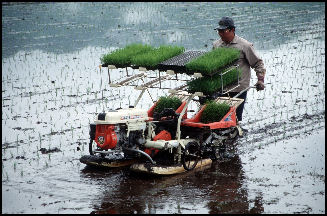
In recent years high summer temperatures and either too much rain or too little have negatively affected rice harvests. High temperatures cause poor yields and produce immature grains with poor starch content. Some blame global warming. One rice expert told Reuters, “The 20 or so days after the ear of the rice has appeared is most crucial...and high temperatures during that period leads to the production of immature grains.”
Farmers are starting to experiment with heat-resistant strains of rice. These taste significantly different than the usual strains and some expect to may take more than a decade for them to be embraced by consumers.
Some Japanese insist that global warming has affected the taste of rice. A chef at an upscale restaurant in the Ginza district of Tokyo told Reuters, “In the past I could really savor the flavor of rice with just a sprinkling of salt. This isn’t a scientific point if...but the past four or five years, it’s become rare to have rice that I really find tasty.”
More Frequent Extreme Weather in Japan?
In January 2012, the Yomiuri Shimbun reported: “Japan witnessed weather irregularities in the summer of 2012. Typhoon No. 12 registered the largest rainfall on record, and Typhoon No. 15 saw evacuation recommendations issued to as many as 1.22 million people in Aichi Prefecture and elsewhere. According to statistics from the Meteorological Agency, heavy rain in Japan has been on the rise over the past 100 years or so. Although the cause behind the increased rainfall remains unknown, some scientists believe it may be linked to global human activities. [Source: Yomiuri Shimbun, January 18, 2012]
“As Masahide Kimoto, vice director of the University of Tokyo's Atmosphere and Ocean Research Institute, puts it: "As the earth's climate changes, antidisaster preparations should be thoroughly reviewed, starting with city planning. Conventional wisdom can no longer cope with the situation.”
“In the case of extreme weather conditions, experts have said preventative measures have limits. Recently, a Land, Infrastructure, Transport and Tourism Ministry council discussed transitioning away from conventional thinking that aims to prevent flooding in all rivers. The council also said it would be difficult to prevent all damage in the event of future, harsher disasters.
Effects of Global Warming on Ocean Currents in Japan
There are fears that global warming could disrupt the ocean currents around Japan and cause considerable damages to fisheries that Japanese depend on for food and dramatically disrupt Japan’s weather. Particularly vulnerable are the currents in the Sea of Japan that carry live-giving oxygen to deep water and bring plankton to the surface.
The Sea of Japan current is created by a rare phenomena in which harsh bitter winds blowing through an opening in a mountain range in the Russian Far East cool the sea in such a way that it triggers a downward current.
The water temperatures in the Sea of Japan have risen by 1.5 degrees C to 3 degrees C in the past 50 years. The fear is that if the sea warms too much the current will fail. The Gulf-Stream-like Kuroshio current off the east coast of Japan is also regarded a vulnerable to temperature changes.
Kyoto Protocol and G-8 Summit

Okinawan coral reef The Third Session of the Conference of the Parties to the United Nations Framework Convention on Climate Change (COP3) was held in Kyoto in December 1997 and adopted the Kyoto Protocol regulating emissions of carbon dioxide and other greenhouse gases in the period of 2008 to 2012. The Kyoto protocol was hammered out after two years of intense negotiations. It calls for industrialized countries to cut their greenhouse gas emissions from 1990 levels by an average of 5.2 percent between 2008 and 2012. Under the agreement, industrialized countries are allowed to purchase the right to emit a certain amount of carbon dioxide from foreign countries if they can not meet the requirements themselves. The pact went into affect after Russia approved it. See Russia, Environment.
The United States under President George W. Bush said it would not ratify the Kyoto Protocol because it would not help the environment very much but it would hurt the world economy. The United States has also objected to the fact that India and China are not bound by the treaty because they are not considered industrialized countries even though they are heavily industrialized and are major greenhouse gas producers.
Japan ratified the protocol in June 2002. Although the United States has refused to ratify, Russia’s ratification in 2004 meant that the criteria necessary for formal implementation had been satisfied, so the treaty came into force in February 2005. Japan is moving forward with a wide range of initiatives in an effort to create a “low-carbon society” with both a healthy environment and a healthy economy.
In July 2008, Japan hosted the G-8 summit. One of the major themes ar the event was global warming. The conference ended with 16 major carbon dioxide emitters agreeing to curb their emissions. The agreement failed to set numerical targets and didn’t have much teeth but did show some progress, if nothing else because countries like the United States and China that failed to ratify the Kyoto protocol agreed with it.
Japan and the Kyoto Protocol
Japan has said it is committed to honoring the terms of the Kyoto protocol. According to terms of the agreement Japan is supposed to reduce its greenhouse gas emissions by 6 percent of 1990 levels between 2008 and 2012, Thus far Japan is having difficulty reaching this goal. As of 2006 it had increased greenhouse emissions by more than 7.8 percent from 1990 levels. In 2007, a government panel issued a report, saying meeting the Kyoto targets will be “very hard.”
If greenhouse gas emissions in Japan are 7.8 percent above 1990 levels Japan will have to cut those levels by 13.8 percent to meet the Kyoto protocol criteria — a daunting task. Japan needs to cuts its emissions by 20 million tons to attain the Kyoto goal in 2010. As things stand Japan is estimated to produce 1.27 billion tons of greenhouse gases in 2010, 20 million to 34 million tons above the goal set by the Kyoto protocol.
The Japanese government has said that plans to reduce carbon dioxide emissions by 22 percent by 2030. To achieve those goals according to one report could cost ¥52 trillion. At the 2008 G-8 Conference Japanese Prime Minister Yasuo Fukuda said that Japan will cut is carbon emissions by 60 percent to 80 percent by 2050.
The Hatoyama government has made global warming one of its key domestic and international issues. Prime Minister Hatoyama spoke on the issue during his first speech — in English — before an international audience at the United Nations in September 2009 and declared that Japan would cut its greenhouse gas emissions by 25 percent from 1990 levels by 2020 as a kind of challenge for other developed countries to do the same.
Combating Global Warming and Reducing Carbon Dioxide in Japan
Meetings have been held with representatives of top industries to get them to set target cuts. The industries have gone along and made significant reductions but there are no penalties if they don’t meet their goals.
In June 2009, the Japanese government said its goal was to reduce carbon dioxide emissions by 15 percent by 2020 but per capita energy emissions are already among the lowest in the world, making it difficult to make further cuts. Nonetheless one study found that carbon dioxide emissions could be reduced by 85 percent by securing more green spaced in crowded urban areas and renovating homes to make them more energy efficient
Getting the commercial and household sector to make reductions has been difficult. These sectors are less centralized and difficult to control and are driven by selfish economic and personal concerns. Schools and hospitals generate 30 percent of the emissions in commercial sector and pressure is being put on them to reduce emissions. Pressure is also being put on stores, pachinko parlors and restaurants which use large amounts of electricity for lighting and air conditioning. A proposal to close all convenience stores in the wee hours of the night conserve energy has met with a lot of opposition.
A 2009 white paper recommended burning wood from trees cut down to thin forests as means of reducing carbon dioxide and providing timber companies with revenues. Burning trees produces less carbon dioxide than burning coal or oil.
The greater Tokyo is considering a carbon dioxide cap-and-trade system to reduce greenhouse gas emissions.
Bjorn Lomberg, a Danish climate expert, estimated that to meet its 2020 climate change targets Japan would have to build nine new nuclear power plants and increase the use of nuclear power by a third, construct more than 1 million wind turbines and boost the sales of “green vehicle” to 50 percent of all vehicles sold.
Reducing Carbon Dioxide and Other Countries
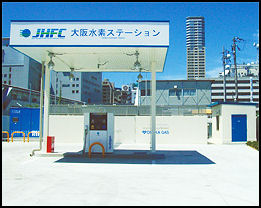
hydrogen gas station in Osaka The Japanese have proposed providing $10 billion in aid to help developing countries reduce carbon emissions. The cost of eliminating a ton of carbon dioxide in Japan can be as high as $200 a ton compared to as little as $1 a ton in China. This has created an incentive for companies in Japan and Europe, which signed the Kyoto Protocol, to offset their rising emission by paying companies in China and the developing world to reduce their emissions for them.
Japan is the leading buyer of carbon credits. It bought 38 percent of the carbon credits offered between January 2005 and March 2006. Buying credits, mostly from developing countries, makes it easier for Japan to comply with the term of the Kyoto Protocol. Japanese companies offer “carbon offset” services in which customers pay money to offset their own emissions. The money goes to things like building hydro-electric plants in Brazil.
In December 2010, the Japanese government said it was going to drop the cap-and-trade scheme — a policy once hailed as a cornerstone of its anti-climate change strategy. The scheme was apparently dropped because of excessive interference by the government in corporate activities and concerns about speculative fiancial transactions and a lack of will of the international community to adopt the cap-and-trade scheme.
In December 2009, the Japanese government pledged to spend ¥1.75 trillion to help developing countries to fight global warming,
New Technology and Reducing Carbon Dioxide in Japan
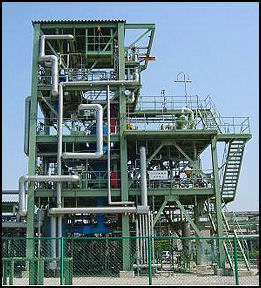
thermal gasification The Japanese government is pushing high-tech solutions to reduce carbon dioxide emissions such as underground storage of carbon dioxide and solar power generators. It also want to rely more on nuclear power and has imposed quotas of carbon dioxide emissions on commercial spaces such as office buildings and department stores.
Japanese researchers are exploring the idea of building huge seaweed plantations in the middle of the Pacific to absorb carbon dioxide and reduce global warming. Researchers from Tokyo University, Mitsubishi Research Institute and Tokyo University of Marine Science and Technology propose building 100 fishing nets — each 10 kilometers by 10 kilometers — to grow sea grapes, which grow up to 20 meters a year or other species of seaweed which absorb carbon dioxide and discharges hydrogen and carbon monoxide. The nest can produce 270,000 tons of seaweed. The seaweed attracts plankton which attracts fish and it can be used for biofuel.
The Japanese government and private companies are exploring the use of underseas ridges made from coal ash and other water material o boost fish catches and reduce greenhouse gases.. The idea is to create undersea mountains that cause updwelling of undersea currents which brings more nutrients to the surface providing food for carbon-dioxide-consuming phytoplankton which in turn provides food for zooplankton and it supplies food for progressively larger sea creatures.
Even with Nuclear Power Reducing Emissions Is Hard
In May 2012, the Yomiuri Shimbun reported: “Japan may be able to cut greenhouse gas emissions only by up to 19 percent in 2020 from 1990 levels under a scenario that would see the ratio of nuclear power generation reach 35 percent by 2030, according to estimates released by an Environment Ministry council. The Central Environmental Council's estimates suggest it will be difficult for Japan to achieve the government's target of a 25 percent reduction in greenhouse gas emissions by 2020--even if it purchases emissions quotas from overseas. The council compiled the estimates in the wake of the crisis at the Fukushima No. 1 nuclear power plant following the earthquake and tsunami on March 11, 2011. [Source: Yomiuri Shimbun, May 24, 2012]
“It first assumed five different government-set nuclear power generation ratios for 2030--35 percent, 25 percent, 20 percent, 15 percent and 0 percent. Nuclear power accounted for 26 percent of the nation's power supply before the disaster. The council also took into consideration renewable energy, and assumed three different levels of energy-saving measures. It also considered two different economic growth rates. Based on these factors, the council calculated how much Japan would be able to reduce emissions for 30 different scenarios.
“According to the estimates, greenhouse gas emissions could be cut 6 percent to 19 percent if nuclear power generation accounted for 35 percent of total electricity production in 2030. If the ratio is reduced to 15 percent--an assumption based on a government policy to restrict nuclear reactor operations to 40 years--emissions could be reduced by 1 percent to 15 percent. The estimates also showed that reduction rates would only reach 11 percent at most if nuclear power generation reached 0 percent. In this scenario, greenhouse gas emissions would increase by 1 percent if Japan achieved a growth rate of 1.8 percent.
“The largest reduction in greenhouse gas emissions can be achieved if Japan sets its nuclear power generation ratio to 35 percent. This, however, is considered unlikely by the Central Environmental Council, as well as an Economy, Trade and Industry Ministry committee dedicated to researching power generation ratios for 2030. The 25 percent reduction target submitted to the United Nations also includes overseas emissions quota purchases and carbon sinks, in which natural reservoirs such as forests absorb carbon dioxide, but it does not specify how these methods can contribute to a reduction in greenhouse gas emissions. Under the Kyoto Protocol, a framework for greenhouse gas reductions from 2008 to 2012, Japan calculates that overseas emissions quota purchases can cut emissions by 1.6 percent and carbon sinks by 3.8 percent.
Japan and the Rain Forest
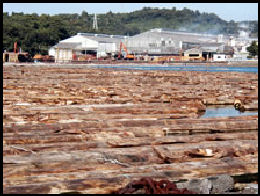
Papua New Guinea
rain forest timber
bound for Japan Chopping down the world’s rain forests deprives the world of carbon-dioxide-consuming trees and plants and causes other terrible things. Japan has traditionally been the world's largest consumer of tropical rain forest wood. Much of the rain forest in Borneo has been cut down to meet the demands of the Japanese market. In the 1980s Japan received the vast majority of its tropical timber from Sarawak and Sabah in Malaysia. These days much of the timber imported to Japan with a Malaysian label is actually from trees that have been illegally logged in Indonesia.
In the 1980s a Japanese company which harvested lumber for the manufacturing of cardboard boxes operated a giant tree eating machine near Medang, Papua New Guinea. The core of the machine was a 15-ton disk with eight steel blades that revolved at a speed of 320 times a minute. Trees were cut to match book size chips in seconds. It was estimated that this one machine gobbled up 7½ square miles of rain forest every year, consuming any species of tree fed to it. Most of the boxes made from chips were sold to electronics firms like Hitachi and Sony and number of trees eaten up depends of number of orders Japan receives from the United States for electronic products. [Source: Peter White, National Geographic, January 1983]
The clear-cut areas are usually replanted with one species of fast-growing tree that are vulnerable to massive attacks from insects.
Japan consumers about 25 billion pairs of disposable chopsticks every a year. In many cases they are made abroad increasing deforestation in China, where 95 percent if them come from. The problem is being addressed by a campaign to get consumers to demand Japan-made chopsticks, usually made from waste wood, even though they are slightly more expensive.
Plantations of fast-growing hoop pines planted in burned off rain forest near Bulolo, Papua New Guinea produce enough wood for 45 million pairs of chopsticks a month. Most of the chopsticks are shipped to fast food restaurants in Japan. [Source: Peter White, National Geographic]
Disposable Chopsticks in China and Japan Strip Asian Forests
Rachel Nuwer wrote in the New York Times, Though the chopstick is the quintessential cutlery choice throughout most of Asia, Japan and China in particular seem prone to using the disposable variety. In China, smaller restaurants prefer disposables while larger ones tend to go with plastic. In Japan, disposables are found even at nicer sit-down establishments. [Source: Rachel Nuwer, New York Times, October 24, 2011]
“Each year, the equivalent of 3.8 million trees go into the manufacture of about 57 billion disposable pairs of chopsticks in China, according to statistics from that nation’s national forest bureau. About 45 percent of disposable chopsticks are made from trees like cotton wood, birch, and spruce, while the remainder are made from bamboo. Half of the disposables are consumed within China. Of the other half, 77 percent is exported to Japan, 21 percent to South Korea and 2 percent to the United States. Chopsticks add to a plague of regional deforestation. According to a 2008 United Nations report, 10,800 square miles of Asian forest are disappearing each year, a trend that must be arrested to fight climate change, given the vital role trees play in absorbing carbon dioxide.
“Donna Keiko Ozawa, a San Francisco activist and artist, told the New York Times,”Japanese restaurants in particular have a tendency to use disposables. They weren’t composting or recycling. For a country otherwise obsessed with recycling — a typical Japanese kitchen often devotes half its space to multiple trash bins for meticulously sorting recyclables — the chopstick phenomenon may seem puzzling. Cost isn’t the driver: restaurants investing in reusable chopsticks at $1.17 a pop actually save money in cost-per-use by comparison with disposables. Restaurant reusables normally have a life span of about 130 meals. Disposables cost about 2 cents in Japan, so the equivalent 130 disposable pairs cost about $2.60.
“Of course, some customers may balk at eating with reusables, citing sanitary concerns. But disposable chopsticks pose risks of their own for consumers and the environment, Greenpeace says. While production standards exist in China, it says, supervision is sometimes nonexistent, especially in small factories. Industrial-grade sulfur, paraffin, hydrogen peroxide and insect repellent are among the harmful chemicals that Chinese media investigations have exposed during production. Paraffin is a known carcinogen, and hydrogen peroxide can harm the digestive system. Chopsticks irresponsibly disposed of can contaminate water and soil quality.
Efforts to Break the Wooden Chopstick Habit in Japan and China
Activists argue that the disposable chopstick habit could gradually be phased out on an individual basis. Chopstick sets complete with a simple or decorative case are sold at many stores and are easy to put in a purse, knapsack or briefcase, they note. In China, organizations like Greenpeace East Asia are trying to raise awareness of the issue. In December, 200 students from 20 Chinese universities collected 82,000 pairs of used disposable chopsticks from Beijing restaurants. With the discarded utensils, they built four trees, each 16 feet high, to create a “disposable forest.” [Source: Rachel Nuwer, New York Times, October 24, 2011]
“The project was featured in a busy pedestrian mall in Beijing, and the students encouraged 40,000 passersby to sign a petition rejecting disposable chopsticks. “Imagine thousands of people passing by that area every day,” said Aihong Li, a spokeswoman for Greenpeace in Beijing. “It was quite shocking for people to see these images.”
“In 2007, China imposed a tax on wooden chopsticks with the goal of helping the environment. After that, Japan — which boasts one of the world’s highest forest coverage rates at 69 percent — simply began relying more on other suppliers like Vietnam, Indonesia, and Russia rather than phasing out disposables.
“While there has been no Japanese legislation to address the issue, a few on-the-ground changes are gaining popularity. Some restaurants now stock plastic chopsticks, although they keep a stash of disposables on hand in case customers request them. At the ubiquitous convenience stores throughout Japan, cashiers now ask if customers need chopsticks rather than sticking them into checkout bags by default. Certain restaurants also offer discounts or free tea for people who bring their own utensils.
“In China, 2,000 Beijing and Guangzhou restaurants have sworn off wooden chopsticks, and the Web site Fantong reports which restaurants are committed to reusables. Last year, the Chinese government issued a notice urging restaurants to go green, although Greenpeace said that the notice did not include specific measures for reaching that goal. “Generally speaking, more and more college students and white-collar workers are bringing their own chopsticks for meals,” Ms. Li of Greepeace says, “though in the greater sense this is still a big problem.”
Image Sources: 1) JAXA 2) Japan-Animals blog 3) JNTO 4) 7) Greenpeace Japan 5) 6) Osaka Gas
Text Sources: New York Times, Washington Post, Los Angeles Times, Daily Yomiuri, Times of London, Japan National Tourist Organization (JNTO), National Geographic, The New Yorker, Time, Newsweek, Reuters, AP, Lonely Planet Guides, Compton’s Encyclopedia and various books and other publications.
Last updated August 2012
